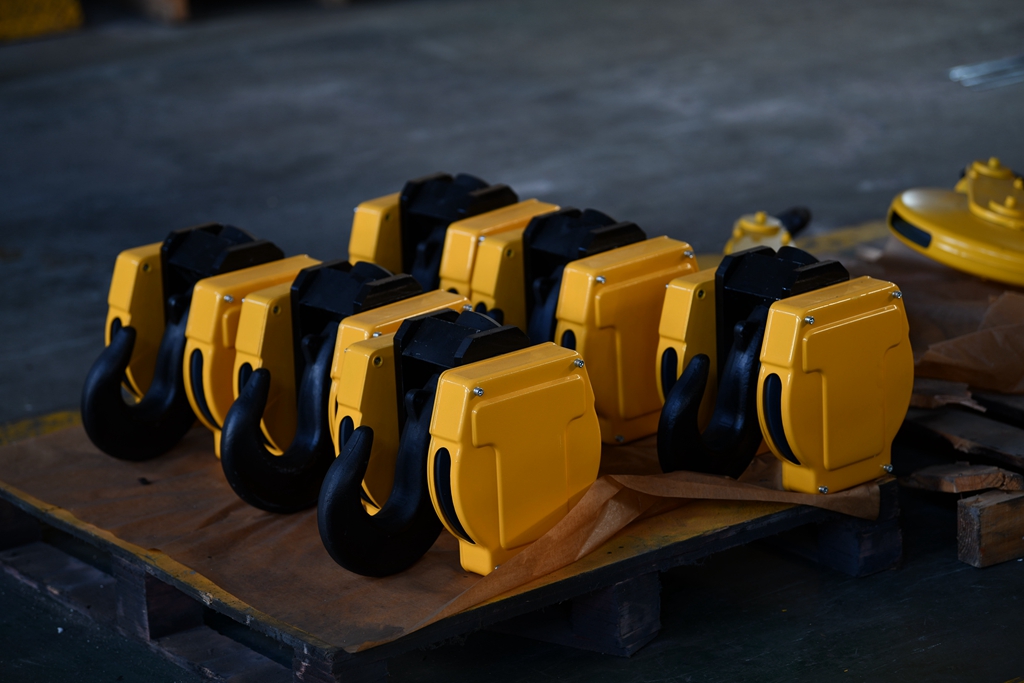A hook block, often referred to as a crane hook block, is a crucial component of a crane or hoisting system used for lifting and moving heavy loads. It is designed to securely attach to the load being lifted and connect to the lifting apparatus, such as a crane's hoist line or wire rope. Hook blocks are used in various industries, including construction, manufacturing, shipping, and material handling.
Key features and components of a hook block include:
- Hook: The hook is the primary attachment point for the load. It is typically designed with a secure latch or latchless mechanism to ensure the load remains securely connected during lifting and movement.
- Sheaves (Pulleys): A hook block often contains one or more sheaves, which are pulley wheels with grooves for guiding the hoist cable or wire rope. Sheaves help distribute the load evenly and reduce friction on the cable or rope.
- Bail (Yoke): The bail or yoke is the frame that holds the sheaves and the hook. It may have a swivel feature that allows the hook block to rotate, improving load positioning and reducing stress on the cable or rope.
- Side Plates: These are the structural components that encase the sheaves and provide support for the hook block's overall structure.
- Safety Latch: A safety latch or latch mechanism is typically found on the hook to prevent the load from accidentally slipping off the hook. This latch can be manually opened when attaching or detaching the load.
- Load Capacity: Hook blocks are rated for specific load capacities, and it's crucial to use a hook block with a capacity that matches or exceeds the weight of the load being lifted.
- Materials and Construction: Hook blocks are typically constructed from high-strength steel or alloy materials to ensure durability and reliability in heavy-duty lifting applications.
- Attachment Method: The hook block is attached to the hoisting equipment using a hook or shackle, depending on the crane's design and requirements.
Hook blocks come in various configurations, including single sheave blocks, double sheave blocks, and multi-sheave blocks, with each designed for specific applications and load capacities. The choice of a hook block depends on factors such as the load weight, crane capacity, and the specific lifting requirements of the task.
Safety is paramount when working with hook blocks and cranes. Operators must be trained to operate cranes safely, inspect hook blocks regularly for signs of wear or damage, and adhere to load capacity guidelines. Proper rigging techniques and the use of appropriate slings or cables are also essential to ensure safe and efficient lifting operations.



